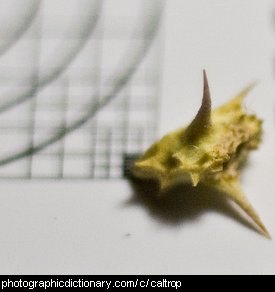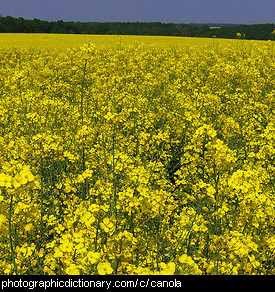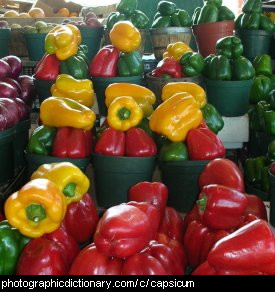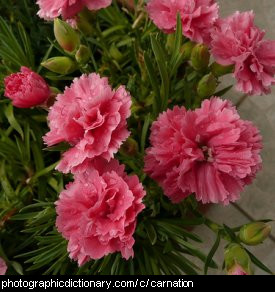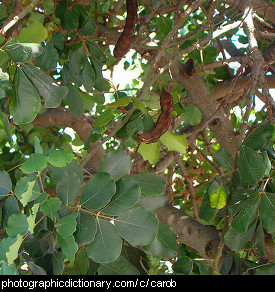Scientific name: brassica oleracea
Scientific name: family: cactaceae
A caltrop is common name given to some (unrelated) plants that have seed heads with 4 or more sharp spikes, arranged so that one of them is always pointing upwards. The seed heads are very painful to step on.
Metal devices of the same name and design can be thrown onto roads in front of cars to burst their tires.
Scientific name: ornamental variety: camellia japonica
Camellias are an attractive plant native to southern and eastern Asia. They have pretty flowers in shades from white through pink to deep red. They grow from about 2-20m high, and are not drought tolerant but will tolerate frost. Most people grow them as ornamental garden plants.
The tea plant is a variety of camellia.
Scientific name: brassica campestris
Scientific name: capsicum annuum
Scientific name: dianthus caryophyllus
Scientific name: ceratonia siliqua
The carob is a small tree from the Mediterranean area. It will grow in a wide variety of soils and climates as long as it is not waterlogged. The young trees are frost sensitive but mature trees are frost tolerant, and the tree is drought tolerant and will even grow in slightly salty soils. Carobs grow big seed pods that start green like in the picture and gradually turn dark, wrinkly brown over a year and then fall off. Carobs are related to peas.
Carob seedpods are sweet and can be dried, roasted and ground and used to make a chocolate substitute.
Scientific name: daucus carota
Scientific name: family: pinaceae, genus: cedrus
Cedar is a group of pine tree originally found at high altitudes in the Himalayas. Cedar wood is scented by its oil, and is very long lasting. It can be used to make roof shingles and siding that will not rot. Cedar wood is a natural moth repellant, and with that property and the nice smell cedar is a popular choice for making furniture that you keep clothes in.





